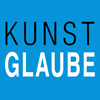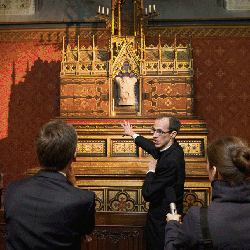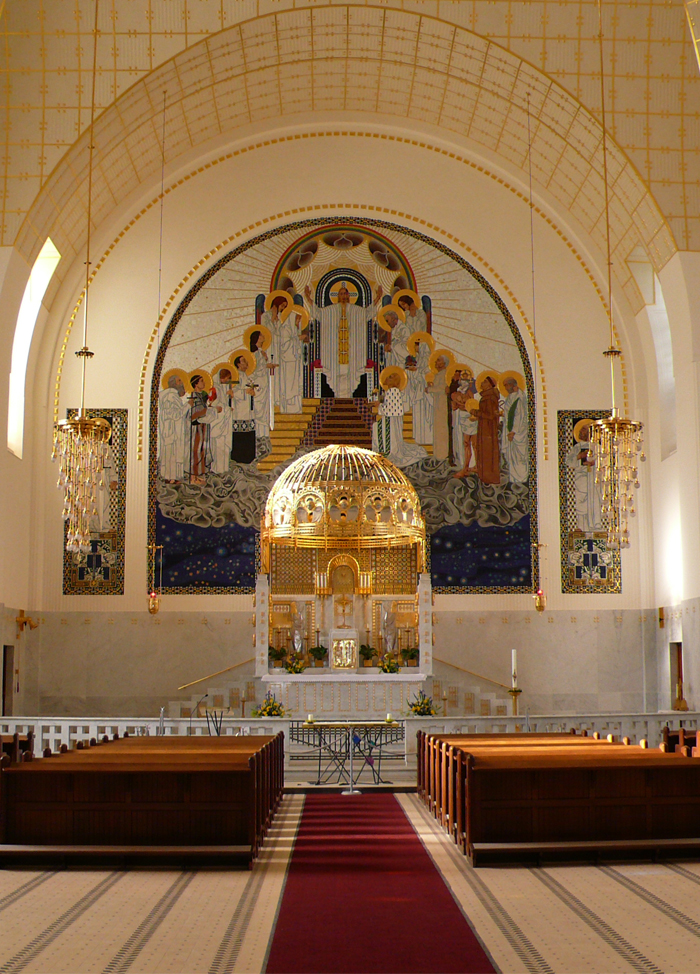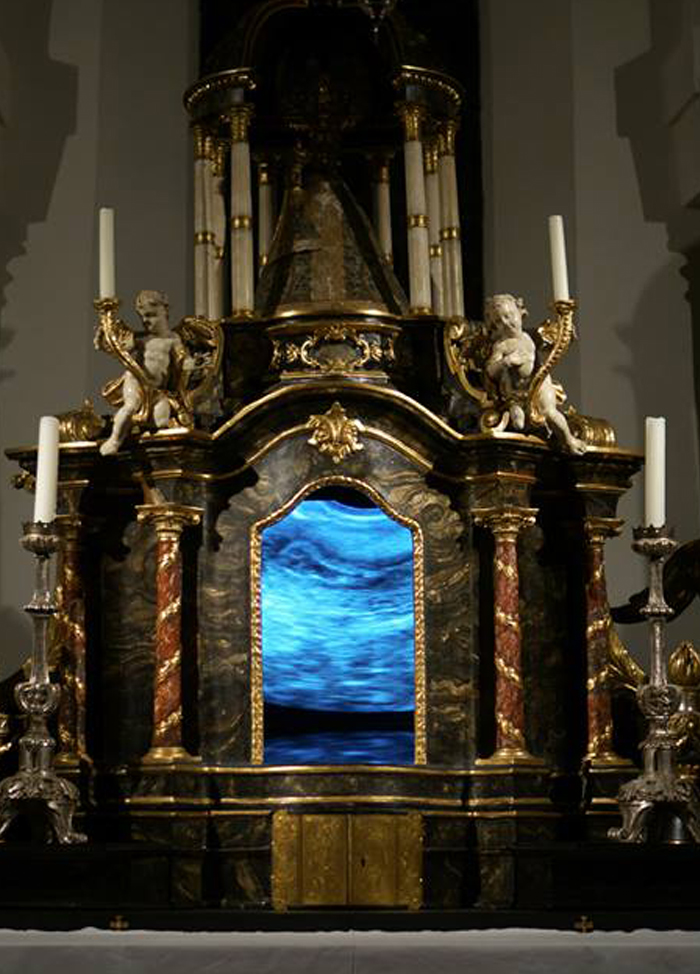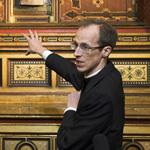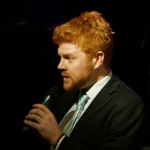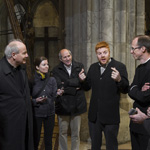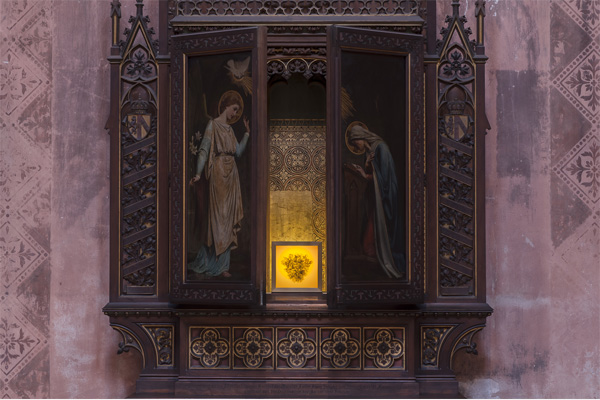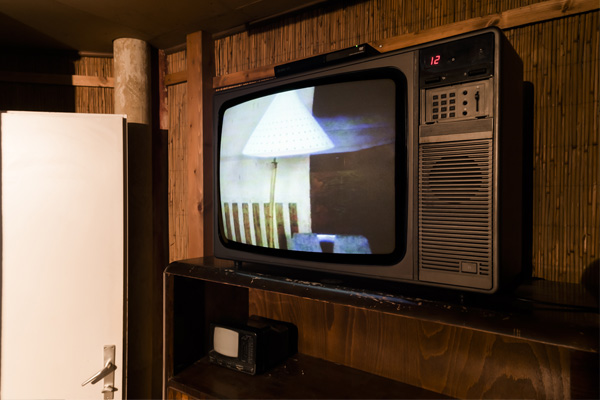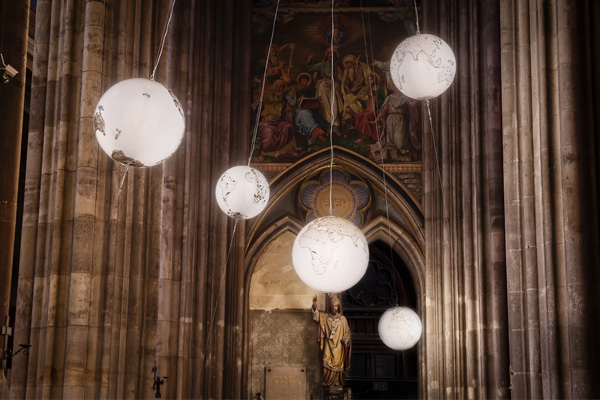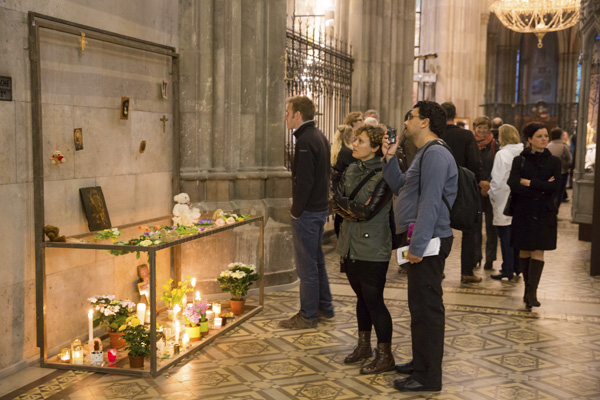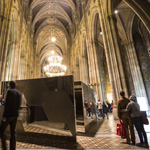OTHER ITEMS AVAILABLE IN OUR LIBRARY
Archer, Michael. Art Since 1960. Rev. Ed. London & New York: Thames and Hudson, 2002.
Cream: Contemporary Art in Culture: 10 curators, 10 writers, 100 artists. London: Phaidon, 1998.
Fineberg, Jonathan. Art Since 1940: Strategies of Being. New York: Harry N. Abrams, 1995.
Foster, Hal. The Return of the Real: The Avant-garde at the End of the Century. Cambridge, Ma.: MIT Pr., 1996.
Goldberg, Rosalee. Performance Art: From Futurism to the Present. Rev. Ed.; London: Thames & Hudson, 2001.
Harris, Jonathan. The New Art History: A Critical Introduction. London & New York: Routledge, 2001 .
Heartney, Eleanor. Postmodernism. London: Tate, 2001.
Hopkins, David. After Modem Art: 1945-2000. Oxford: Oxford UP, 2000.
Lucie-Smith, Edward. Movements in Art Since 1945. Rev. Ed. London: Thames & Hudson, 2000.
Meecham, Paul and Julie Sheldon. Modem Art: A Critical Introduction. London & New York: Routledge, 2000.
Rose, Margaret. The Postmodern and the Postindustrial: A Critical Analysis. Cambridge: Cambridge UP, 1991.
Taylor, Brandon. Avant-Garde and After: Rethinking Art Now. New York: Harry N. Abrams, 1995.
Modernism, Postmodernism, Realism: A Critical Perspective for Art. Winchester: Winchester School of Art Pr, 1987.
Blunt, Anthony. Artistic Theory in Italy, 1450-1660, chapter VIII, especially pp. 107-128, 1940 (refs to 1985 edition)
Greenberg, Clement. "Avant-Garde and Kitsch." Partisan Review. 6:5 (1939) 34-49.
Veronese, Paolo. Report of the sitting of the Tribunal of the Inquisition on Saturday July eighteenth, 1573 in Crawford, Francis Marion. Salve Venetia, New York, 1905. Vol. II: 29-34.
Yoon, Jungu. Spirituality in Contemporary Art — The Idea of the Numinous. London:Zidane Press 2010. pp.1-18
Wolterstorff, Nicholas. Art in Action: Toward a Christian Aesthetic. Eerdmans: Grand Rapids, 1980. pp.65-69,183-191
Bell, Julian. ‘Contemporary Art and the Sublime’, in Nigel Llewellyn and Christine Riding (eds.), The Art of the Sublime, Tate Research Publication, January 2013, https://www.tate.org.uk/art/research-publications/the-sublime/julian-bell-contemporary-art-and-the-sublime-r1108499, accessed 28 March 2016.
Heartney, Eleanor. "Art in the Nineties: A Mixed Prognosis." Critical Condition: American Culture at the Crossroads. Cambridge; New York: Cambridge UP, 1996. 49 -56.
O’Doherty, Brian. Inside the White Cube. The Ideology of the Gallery Space. Expanded edition. Berkely, Los Angeles, London, University of California Press; 1999. (1976) pp.87-92
Sandler, Irving. "Into the 1990s." Art of the Postmodern Era: From the Late 1960s to the Early 1990s. New York: Harper Collins, 1996. 544-556.
Taylor, Brandon. "Narrating Identity: the Early 1990s." Avant-Garde and After: Rethinking Art Now. New York: Harry N. Abrams, 1995. 142-169.
Arya, Rina. ‘Bill Viola and the Sublime’, in Nigel Llewellyn and Christine Riding (eds.), The Art of the Sublime, Tate Research Publication, January 2013, https://www.tate.org.uk/art/research-publications/the-sublime/rina-arya-bill-viola-and-the-sublime-r1141441, accessed 28 April 2015.
Bernier, Ronald R. The Unspeakable Art of Bill Viola: A Visual Theology. Eugene: Pickwick, 2014. pp.1-10, 78-82
Bryan-Wilson, Julia. "Infinite Quest," book review of Yayoi Kusama's Infinity Net, Bookforum (Sept/Oct/Nov. 2011): 45
Morgan, David. “Modern Art and Christianity”. The Forge of Vision: A Visual History of Modern Christianity. 1st ed. University of California Press, 2015. 196–224
Viola, Bill. "Video Black--The Morality of the Image," in Doug Hall ed. Illuminating Video, pp. 477-486;
Yoon, Jungu. Bill Viola: Technology as Revelation in Spirituality in Contemporary Art — The Idea of the Numinous. London:Zidane Press 2010. pp.87-94
Yoshimoto, Midori. “Performing the Self: Yayoi Kusama and Her Ever-expanding Universe”. Into Performance: Japanese Women Artists in New York. Rutgers University Press, 2005. 45–78.
Andrew, E. Writing the Sacred Journey: The Art and Practice of Spiritual Memoir, Boston, Massachusetts And Enfield, Skinner House. 2005
Anon. Yves Klein Now: Sixteen Views, London, South Bank Centre. 1995
Art Gallery Of Ontario. The Sacred and Profane in Symbolist Art, Toronto. 1969
Ashton, D. The Unknown Shore. A View of Contemporary Art. [With Reproductions.], pp. Xvii I. 265. Studio Vista: London; Printed In U.S.A, 1964
Ashton, D. About Rothko, New York, Da Capo Press. 1996
Avgitidou, A. The Artist As Subject In Creative Stasis And Drasis, Explored Through Performative Subjectivity In Media Art And Diary Practice. [Phd Thesis], London, London Institute. 2003
Baas, J. Smile Of The Buddha: Eastern Philosophy And Western Art From Monet To Today, Berkeley, California And London, University Of California Press. 2005
Barnes, S. J. The Rothko Chapel: An Act of Faith, Houston, Texas, Rothko Chapel, Austin, University Of Texas Press. 1989
Baxendall. M. Painting and Experience in Fifteenth Century Italy, Oxford, Oxford University Press. 1972
Bellah, R. N. Beyond Belief: Essays on Religion in a Post-Traditional World, New York and London, Harper And Row. 1976
Benezra, Neal and Olga M. Visa. Distemper: Dissonant Themes in the Art of the 1990s. Washington; New York: Hirshhorn Museum and Sculpture Garden,
Smithsonian Institution & OAP, 1996. 7 -21.
"Best of the '90s: A Special Issue." Artforum 38.4 Dec. 1999
Beuys, J., Klein, Y. and Rothko, M. Beuys, Klein, Rothko, London, Anthony D'offay Gallery. 1987
Billington, R. Religion Without God, London, Routledge. 2002
Biocca, F. And Lew, M. R. Communication in the Age Of Virtual Reality, Hillsdale and Hove, Lawrence Erlbaum. 1995
Bois, Y. -A. And R. E. Krauss. Formless : A User's Guide. New York, Zone Books. 1997
Burckhardt, T. And North Bourne, W. E. C. J. B. Sacred Art in East and West: Its Principles And Methods, Bedfont, Perennial Books. 1976
Burke, E. And Phillips, A. A Philosophical Enquiry into The Origin Of Our Ideas Of The Sublime And Beautiful, Oxford, Oxford University Press. 1990
Cameron, Dan. "The New York Problem." Flash Art 23.152. (May-June 1990): 119-120.
Carroll, N. L. And Carroll, N. L. A Philosophy of Mass Art, Oxford, Clarendon Press. 1998
Casement, A. And Tacey, D. The Idea of The Numinous: Contemporary Jungian And Psychoanalytic Perspectives, London, Routledge. 2006
Castaneda, C. The Wheel of Time, London, Allen Lane. 1999
Cembalist, Robin ed. "The We Decade." Art News 91. 7 (Sept. 1992): 62 -89.
Christensen, C, C. Municipal Patronage and Crisis Of The Arts In Reformation Nuernberg, Church History Vol. 36(No. 2); 1967. pp.140-150
Chun, W. H. K. And Keenan, T. New Media, Old Media: A History and Theory Reader, New York And London, Routledge. 2006
Couldry, N. And Mccarthy, A. Mediaspace: Place, Scale, and Culture in a Media Age, London, Routledge. 2004
Crary, J. Techniques of the Observer: On Vision and Modernity in the Nineteenth Century, Cambridge, Massachusetts and London, Mit Press. 1990
Crowther, P. The Kantian Sublime: From Morality to Art, Oxford, Clarendon. 1989
Darley, A. Visual Digital Culture, Routledge. 2000
David 'Public at Fast Sees the Art Behind the Fuss', The New York Times, New York. 1999
Decker Phillips, E. Paik Video, New York, Barrytown, Ltd. 1998
Derrida, J. And Stiegler, B. Echographies of Television: Filmed Interviews, Cambridge, Polity Press. 2002
Dorment, R. Oamien Bares His Soul. Daily Telegraph, London. 2003
Drury, J, M. Painting The Word; Christian Pictures And Their Meaning, New Haven, Connecticut And London, Yale University Press In Association With National Gallery Publications. 1999
Harvey, David. "Postmodernism." The Condition of Postmodernism. Oxford: Blackwell, 1990. 39 -65.
Heartney, Eleanor. "Art in the Nineties: A Mixed Prognosis." Critical Condition: American Culture at the Crossroads. Cambridge; New York: Cambridge UP, 1996. 49 -56.
Oliva, Achille Bonito. "Post-Art: The Art of the Twenty-First Century." Flash Art 24.158 (May -June 1991 ): 136.
Sandler, Irving. "Into the 1990s." Art of the Postmodern Era: From the Late 1960s to the Early 1990s. New York: Harper Collins, 1996. 544-556.
Taylor, Brandon. "Narrating Identity: the Early 1990s." Avant-Garde and After: Rethinking Art Now. New York: Harry N. Abrams, 1995. 142-169.
